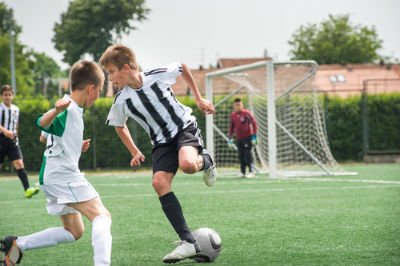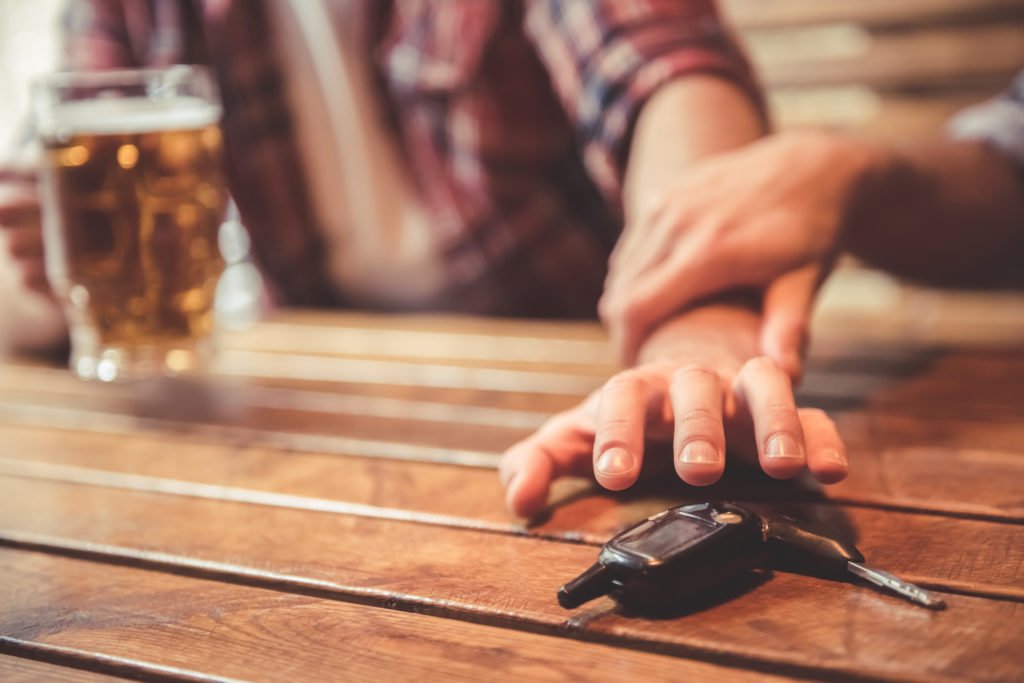
Fall brings pumpkins, apples, sweaters, and for many families, sports like football, soccer and others. As kids’ fall sports swing into gear, it’s important to take steps to keep practices and games fun, safe and injury-free.
While sports are a wonderful opportunity for kids to learn teamwork, strategy and stay physically fit, they do present a risk for injury.

More than 46.5 million American children participate in sports each year, according to Safe Kids Worldwide, and 1 in 3 children who play a team sport will suffer an injury serious enough to miss practice or games.
 The majority – 62 percent – of organized sports-related injuries happen during practice, not during games.
The majority – 62 percent – of organized sports-related injuries happen during practice, not during games.
That’s millions of kids who are hurt, with many of them going to emergency rooms for treatment.
 Sports injuries are the most common cause of primary care office visits due to injury, according to the National Institute of Arthritis and Musculoskeletal and Skin Diseases.
Sports injuries are the most common cause of primary care office visits due to injury, according to the National Institute of Arthritis and Musculoskeletal and Skin Diseases.
These injuries vary greatly, from simple scrapes and muscle strains to more serious broken bones, concussions and other traumatic brain injuries (TBI).
Most Common Fall Sports-Related Injuries
Generally, sports injuries can be categorized as either overuse or acute (traumatic) injuries, Dr. Tara Forcier, a pediatrician, wrote in an article. Overuse can occur when stress on muscles, soft tissues and joints are not given the enough time to heal. This can lead to pain or soreness.
Some of the most common sports-related injuries for kids include:
 Sprains and strains
Sprains and strains
Falls and collisions can result in sprains and muscle strains. Sprains happen when a ligament is injured. Many knee and ankle injuries are sprains. Strains are injuries to the tendon or muscle.
 Growth plate injuries
Growth plate injuries
Sometimes when a child is hurt, the growth plate – the area of developing tissues at the end of the long bones of growing children – is injured. These long bones include hands and fingers, the forearm, upper leg, lower leg and foot bones.
 Repetitive motion injuries
Repetitive motion injuries
Overuse of muscles and tendons can led to stress fractures and tendinitis. These injuries don’t always show up on X-rays, but can be quite painful.
 Fractures
Fractures
Breaking a bone can happen during contact or collisions with other players.
 Heat-related illnesses
Heat-related illnesses
The fall season can still have many hot and muggy days, especially in warmer climates like South Carolina’s. When children don’t get enough fluids or work too hard in the heat, they can suffer dehydration, heat exhaustion or heat stroke. These dangerous conditions can be worse for children because they sweat less than adults.
 Head injuries and concussions
Head injuries and concussions
Head injuries can include dental, eye and brain injuries. Concussions are a particular concern, with headache and dizziness as the main symptoms. Many of these injuries happen when a player collides with the ground, equipment or another player. Concussions can range from relatively mild to more serious. The Sports Concussion Institute reports than 5 to 10 percent of athletes will suffer a concussion during a sports season. For males, football is the sport with the greatest concussion risk at 75 percent. For females, soccer is the sport with the greatest risk, with a 50 percent chance of concussion.
Treatments for sports-related injuries vary. Many sports injuries, such as sprains, strains and bone injuries, can be treated with “RICE” – Rest, Ice, Compression and Elevation. Rest is key – after an injury a child should wait at least 48 hours before resuming sports activity. Head injuries and other moderate and severe injuries such as obvious fractures, dislocation, prolonged swelling and severe pain, should be treated by a doctor.
Tips for Preventing Fall Sports Injuries
Many fall sports injuries can be prevented. These tips could stop an injury from happening or lessen the impact:
 Make sure your child’s sports league plays on safe fields and playing surfaces. Fields should not have holes or ruts and playing surfaces should not be slippery. Sporting organizations should demonstrate a commitment to injury prevention and properly maintained playing surfaces are part of that.
Make sure your child’s sports league plays on safe fields and playing surfaces. Fields should not have holes or ruts and playing surfaces should not be slippery. Sporting organizations should demonstrate a commitment to injury prevention and properly maintained playing surfaces are part of that.
 Coaches should have basic first aid and CPR training, and have a plan for dealing with emergencies. Some organized sports programs have athletic trainers that can provide immediate care for injuries.
Coaches should have basic first aid and CPR training, and have a plan for dealing with emergencies. Some organized sports programs have athletic trainers that can provide immediate care for injuries.
 Make sure children have and consistently use the proper safety gear for their sport, such as helmets, padding, guards and eye protection. Children who wear eyeglasses should wear glasses made for sports. This safety gear can reduce the chances for injury. Coaches should be familiar with the safety equipment, as well as all of the rules for the sport.
Make sure children have and consistently use the proper safety gear for their sport, such as helmets, padding, guards and eye protection. Children who wear eyeglasses should wear glasses made for sports. This safety gear can reduce the chances for injury. Coaches should be familiar with the safety equipment, as well as all of the rules for the sport.
 Make sure you and your child know and understand all the rules for the sport they are playing. The rules are in place for a reason, and part of that reason is to keep the players safe.
Make sure you and your child know and understand all the rules for the sport they are playing. The rules are in place for a reason, and part of that reason is to keep the players safe.
![]() Teach children about avoiding injuries as part of learning to play the game. A skilled player learns to anticipate possibly dangerous situations and take action to avoid them.
Teach children about avoiding injuries as part of learning to play the game. A skilled player learns to anticipate possibly dangerous situations and take action to avoid them.
 Warm-ups and cool-downs should be part of the sports routine. It’s important to warm up the body to increase flexibility and to cool down to loosen any muscles that tighten during exercise.
Warm-ups and cool-downs should be part of the sports routine. It’s important to warm up the body to increase flexibility and to cool down to loosen any muscles that tighten during exercise.
 Proper hydration is key. Kids playing sports should have access to plenty of water during practice and games, especially during hotter weather. Good nutrition can help your child from becoming too fatigued, which can also lead to accidents and injuries. Sunscreen is also important to prevent sunburn. The sun can still be quite strong in the fall.
Proper hydration is key. Kids playing sports should have access to plenty of water during practice and games, especially during hotter weather. Good nutrition can help your child from becoming too fatigued, which can also lead to accidents and injuries. Sunscreen is also important to prevent sunburn. The sun can still be quite strong in the fall.
 Keep kids exercising. Even if your child plays a sport only in the fall, make sure they exercise throughout the year. A healthy, athletic child is less likely to get injured.
Keep kids exercising. Even if your child plays a sport only in the fall, make sure they exercise throughout the year. A healthy, athletic child is less likely to get injured.
 Make sure your child has a physical exam each year. Ask the doctor if your child’s physical condition puts them at greater risk for specific types of injuries.
Make sure your child has a physical exam each year. Ask the doctor if your child’s physical condition puts them at greater risk for specific types of injuries.
 In her article, Dr. Forcier emphasizes keeping sports fun for kids. “An inappropriate emphasis on competition above safety, or a ‘win at all cost’ mentality, will cause some young athletes to make choices that harm themselves or others, leading to more injuries, some of which could be severe enough to prevent future sports participation,” she wrote.
In her article, Dr. Forcier emphasizes keeping sports fun for kids. “An inappropriate emphasis on competition above safety, or a ‘win at all cost’ mentality, will cause some young athletes to make choices that harm themselves or others, leading to more injuries, some of which could be severe enough to prevent future sports participation,” she wrote.
Fall sports are supposed to be fun for kids and their parents. Staying healthy and preventing injuries will help ensure you and your children have a great, exciting season ahead.
 However, if your child suffers a sports injury and you believe negligence on the part of coach, teacher or other sports organizer played a role, you should talk to an experienced personal injury attorney in South Carolina.
However, if your child suffers a sports injury and you believe negligence on the part of coach, teacher or other sports organizer played a role, you should talk to an experienced personal injury attorney in South Carolina.
Sources:
- Space Coast Daily – Get Ready For a Safe Fall Sports Season
- National Institute of Arthritis and Musculoskeletal and Skin Diseases – Preventing Musculoskeletal Sports Injuries in Youth: A Guide for Parents
- Safe Kids Worldwide – Preventing Sports-Related Injuries
- Sports Concussion Institute – Concussion Facts






































